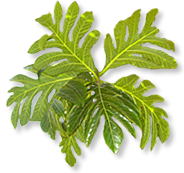Environmental Landscape Technologies and Systems
TPSS 658
Faculty:
Andrew Kaufman
Goals:
- Develop an understanding of how and what is LID (low impact design) in regards to landscape.
- Cultivate an understanding of how green roofs help manage stormwater runoff, conserve energy, moderate the urban heat island, sequester carbon, repair fragmented urban ecosystems, improve human health, & grow food.
- Become familiar with how barriers to acceptance, economics, cost/benefit analysis, public policy, and industry organizations influence the implementation of green technologies on a wide scale.
- Understand the benefits and drivers for vegetation coastal bio-shield systems.
- Recognize green roof system types/wall design and installation practices including plant species and substrates.
- Understand environmental impacts, ecosystem services, integration with other environmental practices.
- Identify influence of economics, public policy, and industry organizations of green roofs.
- Understand and describe key design components for a green roof or living wall system including: waterproofing, drainage, filtering, root management, growing medium, planting, and maintenance.
- Examine case studies to demonstrate the practical application of green roofs and living walls.
Skills and knowledge to be acquired:
This course will be to examine the fundamentals of green roofs, living walls, coastal bio-shields, and selected other green technologies. We will consider their origins, installation, maintenance, and relationship with other green development and building technologies and practices. Emphasis will be on LID and use of green technologies to assist in mitigating storm water, heat island, energy costs and loss of natural urban habitat in addition to other uses and benefits. This is primarily a seminar/discussion class that will include both lecture and practicum periods and will be consist of hands-on projects, guest lectures, and field trips.
Description:
To understand and advance the science and art of green technologies including but not limited to: green roofs, living walls, rain gardens, and bio-shields. With a comprehensive understanding of the LID (low impact design) principles and practices, the use of variety green landscape technologies will assist in increasing knowledge and producing more viable and enduring built landscapes.
Cross-Listed courses:
Arch


